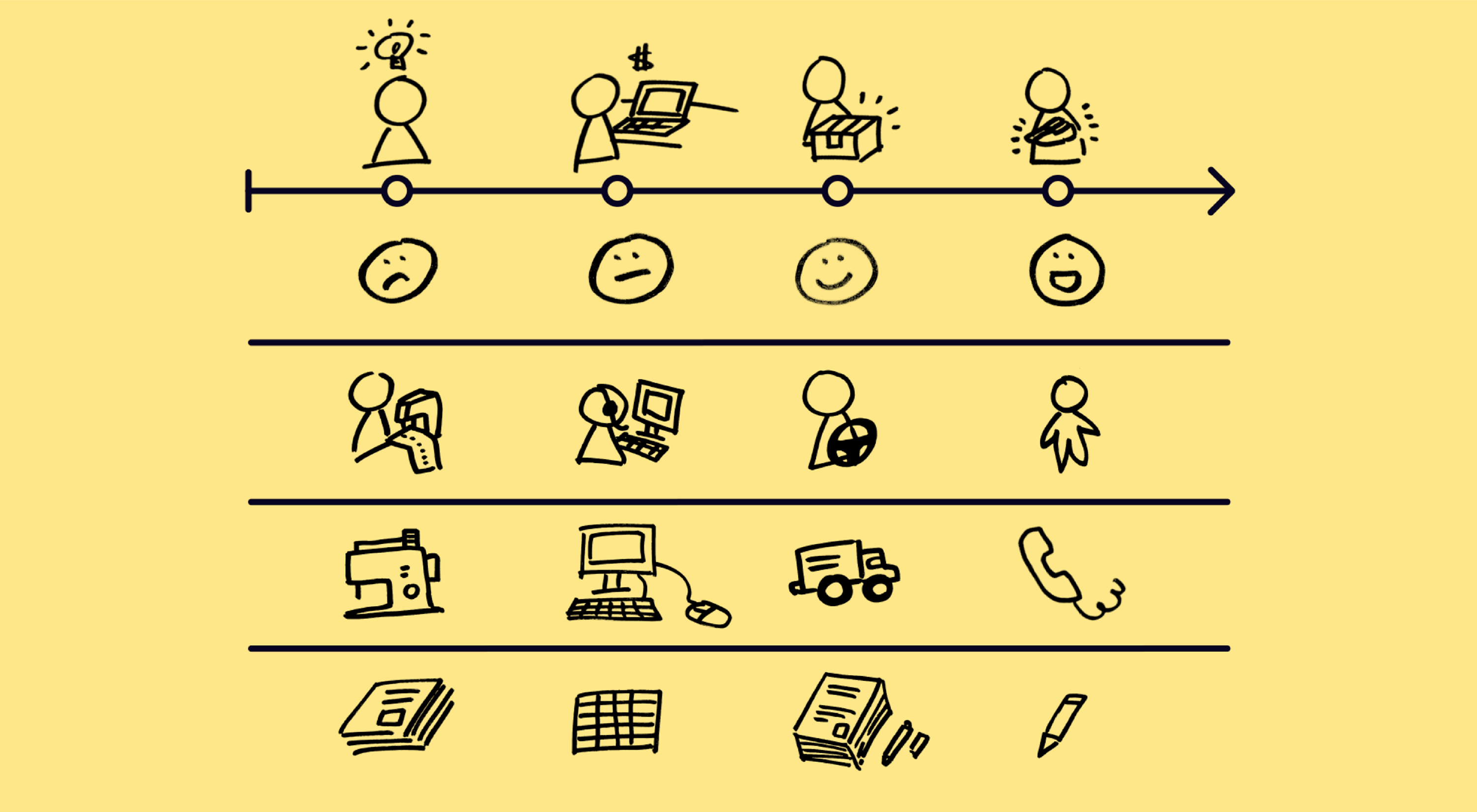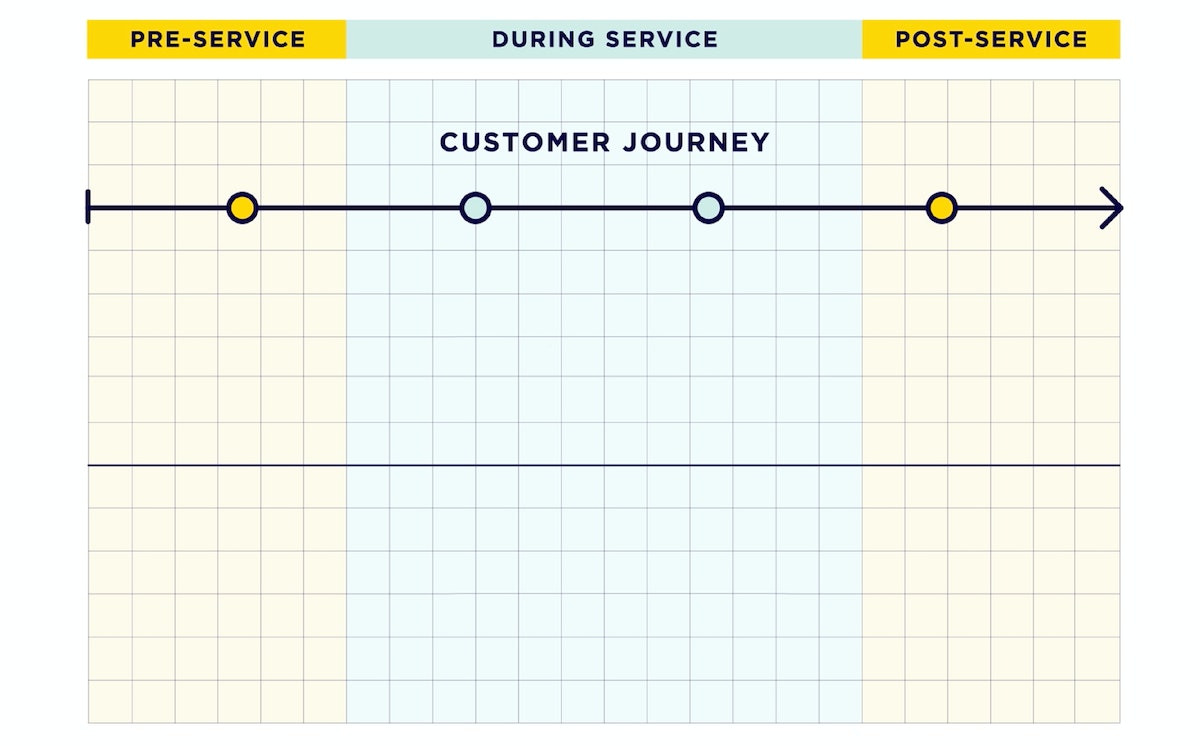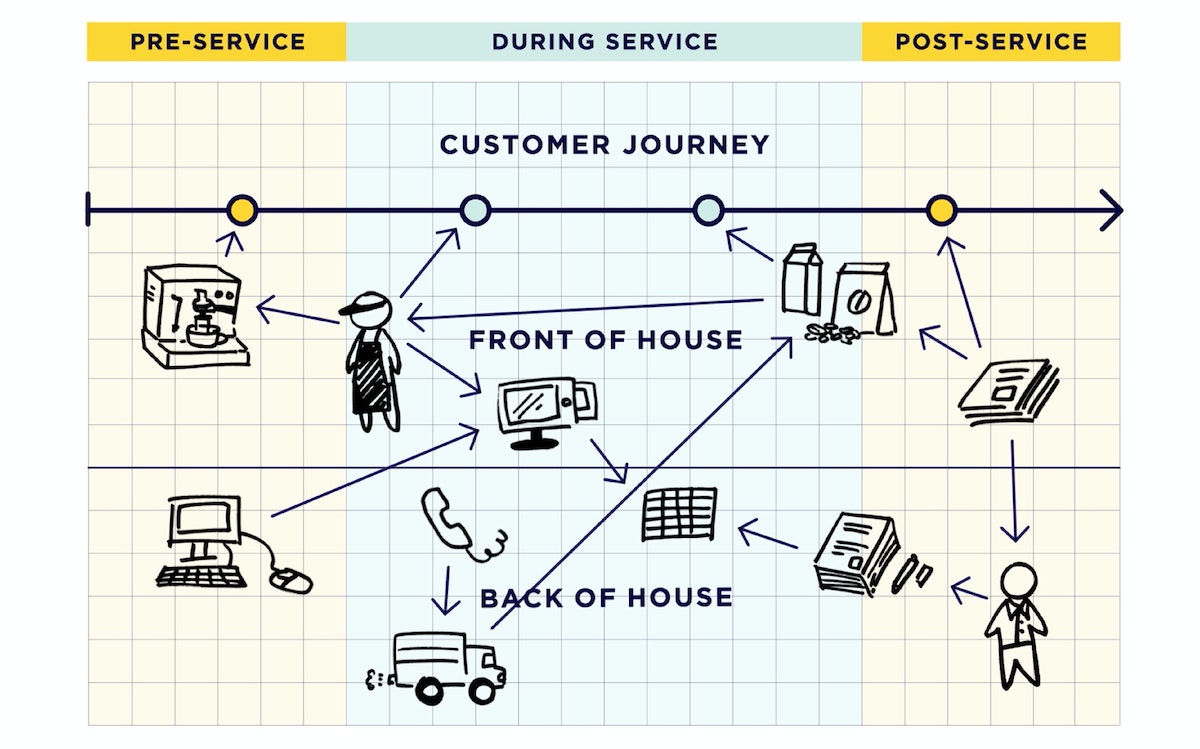3 tips to help you prototype a service

Prototyping is an integral part of design, but when it comes to experiences and human interaction, it can be hard to figure out exactly how to do it.
A prototype of a physical product is easy to imagine, but the process of leaving the hospital after giving birth, or having a new kind of conversation between a traveler and a flight attendant, is not easily built out of cardboard and foam core.
In my years at IDEO—and at companies like LeapFrog and Virgin Entertainment Group—I’ve seen service prototypes come in many shapes and sizes, but I’ve found the most successful ones are based on real customer needs and co-created with the people responsible for delivering the service. Whether you’re building storyboards and sketches, simulated interactions, or mocked-up physical spaces, these three tips should give you a little inspiration to help you create your own.
1. Design only the details that matter

Keep in mind that with any prototype—service design included—you’re looking to spend a little (effort and money) to learn a lot. This is especially relevant in service prototypes, which can change over time, and often involve components like people, space, and physical and digital objects. Figure out what elements of your service are necessary to show potential users what their experience would actually feel like, and eliminate the rest. For instance, if you want people to feel welcomed to an experience, you might spend more time designing the human-to-human interactions, and less time figuring out the design of the space where the interactions take place. If you want people to feel efficiently handled during a check-in moment, you might spend more time designing the digital interface for the process, and less time designing the artifacts and documents that are sprinkled throughout.
In a project with Kaiser, we created a visual checklist that nurses could use to help parents understand all the steps that needed to happen before they could take their babies home. To make sure that the new tool wouldn’t add to parents’ confusion, we hung paper prototypes in some rooms, and had nurses mark the number of calls they got from each patient. It turned out, parents who had a prototype had 60 percent fewer questions than parents who didn’t. And we were able to pick up all those insights without even worrying about what the space looked like—just a simple prototype.
2. Factor in the before and after

When designing a service moment, consider the user experience not just during the moment, but also before and after. Think about a simple moment, for example checking into a hotel. What happens before? Are guests arriving travel weary and jetlagged? Are they coming to celebrate their honeymoon? As a service provider, it’s important to remember that you’re not the only thing on the user’s mind, they’re processing this moment along with everything else going on in their day. After check in, could they easily find their room and was it clean? Were they able to quickly transition into desired activities whether to celebrate, get pampered, and relax, or get to an event like a conference?
In a project with the hotel chain Crowne Plaza, our goal was to design a lobby space that would work for all business travelers. We created a concept that would include spaces for heads-down time, places for group work, a grab-and-go menu of healthy items, and a staff member who could help with business needs. To test it, we set up a network of sensors and cameras to track traffic flow through the different spaces, and which were used most, and when. With these metrics, and interview answers from guests before and after seeing the prototypes, we were able to gauge how well we were meeting traveler needs at every stage of their journey.
3. Involve users and employees

Prototyping helps us pick apart our assumptions, see where we’ve made progress, and where we’ve failed. Designing services is a process that must be done collaboratively, particularly with those who are ultimately responsible for delivering the service to customers. That ensures that you have the right experience and depth to inform new ideas. And it helps you get crucial buy-in when you’re promoting the future vision of your service.
So who should you invite to create and test your prototypes? Think about employees, end users, even people moving around behind the scenes, and figure out how they should show up in your prototypes. Do you need a real nurse chatting with a real patient? An actual bellman who can try out a new check in process with a million-miler business traveler? What about the executive who is ultimately in charge of the project?
In a project with Lufthansa, we were looking to redesign business class to keep up with modern travelers. Once we homed in on the experience we wanted to create, we built a 1:1 scale mockup of a plane with some foam core and business class seats, then invited real travelers and crew to test it out. Not only could they report on the experience from both sides, execs could check out the experience, too, and sign off on our new ideas.
The best advice for service design prototyping, though, is the same as any other kind of design work: Do it early, do it often, and keep iterating toward the right solution.
Words and art


Subscribe

.svg)







